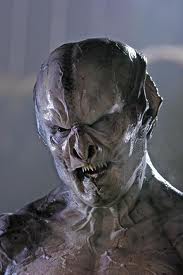One of the main points I make in my Vampire Syndrome Saga is that ‘different’ does not equate to ‘weaker’. My friend and fellow PDMI Author Cindy Koepp shows us the same piece of wisdom in her upcoming novel, “Like Herding The Wind”. 🙂
“Different, Not Weaker” by Cindy Koepp
Too often, we perceive things that are different from our idea of “normal” as weaker or deficient. Sometimes, that is the case, but more often, different is just different. The things that make us unique are not weaknesses but can become our greatest strengths. The perception of strength and weakness is.
In “Like Herding the Wind: An Urushalon Novel,” soon to be released by PDMI Publishing, an Eshuvani generation ship crash-landed in a farmer’s field in Germany. Unable to find the resources on Earth to fix their ship, the Eshuvani built enclaves and tried to let the humans develop without interference. Three hundred fifty years later, Eshuvani criminals start a crime wave in the Texas coastal town of Las Palomas. With police officers being injured and killed in the efforts to stop them, Sergeant Ed Osborn attempts to use his ties to the Eshuvani community to get help for his men, but the local leadership wants nothing to do with humans. Ed contacts his urushalon, Amaya Ulonya, the Eshuvani mother he adopted when he was a boy, and seeks her help.
After the death of her partner, Amaya, the captain of a police and rescue team, finds more grief than joy in her current assignment. Amidst controversy, she arranges to spearhead the new Buffer Zone station between Las Palomas and the nearby Eshuvani enclave of Woran Oldue. She hopes the opportunity to help Ed train his people will help her bury the past. The indifference of the local administration leaves her with Ill-functioning equipment and inexperienced staff. It only gets worse when the attacks of an Eshuvani criminal grow personal. Amaya must get control of her grief to help Las Palomas or risk losing someone even more dear to her than her last partner.
As far as humans are concerned, Eshuvani are superhuman. They’re fast, seeming to react at blur speeds; and they’re strong enough to pick up an adult human male and throw him against the wall with considerable force. That strength and speed make the Eshuvani criminal element such a hazard among the human police. Without proper training, the humans don’t know how to overcome their attackers.
From the perspective of the Eshuvani, humans have incredible endurance and a remarkable resilience particularly in the face of psychological trauma. Eshuvani admire the humans’ ability to keep going both physically and mentally even after the most persistent of their own people has run out of steam.
At the same time, members of each race find the other intolerable in some ways. Eshuvani find humans too aloof and detached, while humans consider Eshuvani emotionally unstable and secretive.
Into this quagmire of misunderstanding, Amaya arrives to help her urushalon train his people to use their differences to overcome the threat.
***
“Like Herding the Wind”, releasing January 15, 2016, is now available for pre-order on Amazon.com.

















